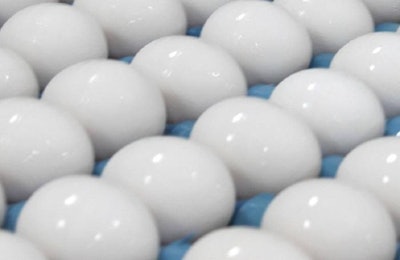
When Mike Rowe and his crew for the Discovery Channel show “Dirty Jobs” went to a Hickman’s Family Farms egg facility in Arizona, Rowe stated “Not everybody is comfortable seeing exactly where their food comes from.”
But when the segment of the show aired and was this week released on YouTube, the staff at the Hickman’s facility could feel good about how they not only represented their company, but the egg industry and animal agriculture industry as a whole.
Any time crews from a mainstream television show film at an agricultural enterprise, it can make someone in the livestock and poultry sectors a little nervous. But one thing I like about Rowe is that while he likes to make a lot of wisecracks that make for good TV, he is always respectful to the workers and the duties they perform.
Clint Hickman, Rowe’s primary host during his visit, gave him every reason to be respectful.
Shortly after telling Rowe the history of the company that was founded by his grandma in 1944 with 50 hens and has grown into a 4 million hen business, Hickman quickly addressed four important areas that could be concerns for the consumer.
1. Biosecurity -- When Rowe asked why he had to be put into special coveralls, Hickman explained to him that it was for biosecurity and protection of the chickens from infectious diseases such as avian influenza and Newcastle disease. Later in the show, they had Rowe and his crew take showers before moving into another part of the operation, with the importance of biosecurity again being stressed.
2. Caged hens versus cage-free -- While Hickman’s Family Farms is expanding its cage-free egg operations, when asked by Rowe why the birds at this Arizona operation were in cages, Hickman explained that it was actually for the chickens' own good. “In that one square mile, you probably have about 50 coyote dens out there. So if we let our birds decide to run free, there’s probably going to be a gigantic dinner bell out there,” Hickman said.
3. Fresh feed – While going through the barns, Hickman explained to and showed Rowe how the birds are given fresh feed via a conveyor belt six times a day.
4. Manure issues – Hickman not only showed how the manure is removed daily to ensure a clean and safe environment for the birds, he allowed him to do the job himself. They explained that the manure and other byproducts would be reused for fertilizer pellets often used on golf courses.
As expected, much of the segment showed footage of the manure removal process. But the show also showed other parts of the operation, as they removed the broken eggs, separated the eggs that might not be as attractive but are still suitable for liquid egg products, graded the eggs, packaged the eggs into cartons and packaged the liquid eggs. I thought the Hickman’s workers showed great attention to detail and should leave the viewers feeling confident about where their eggs come from.
It appeared Rowe felt confident as well.
“We love our eggs in this country, and I’m grateful for that,” he said at the show’s conclusion.















